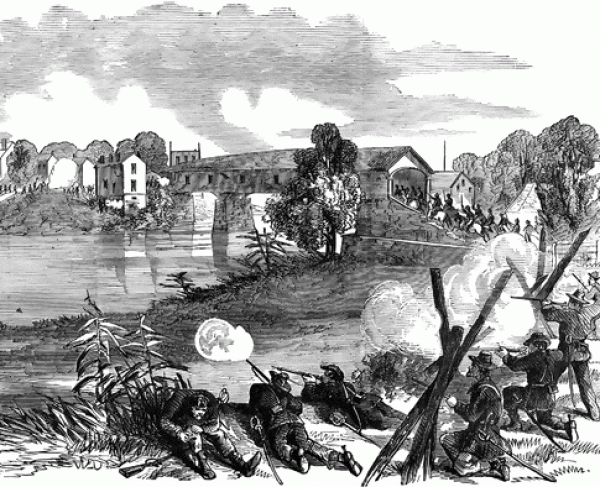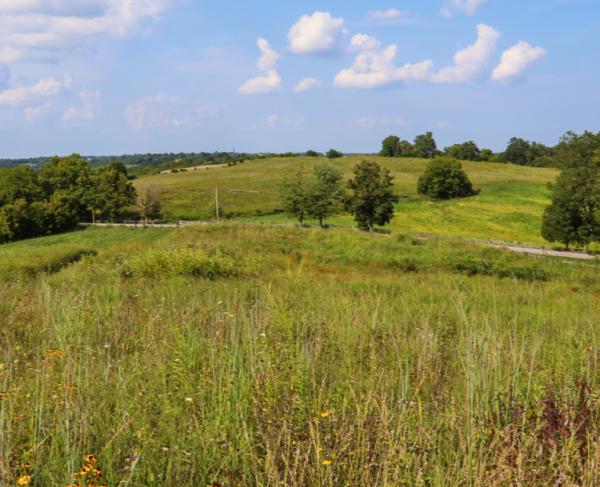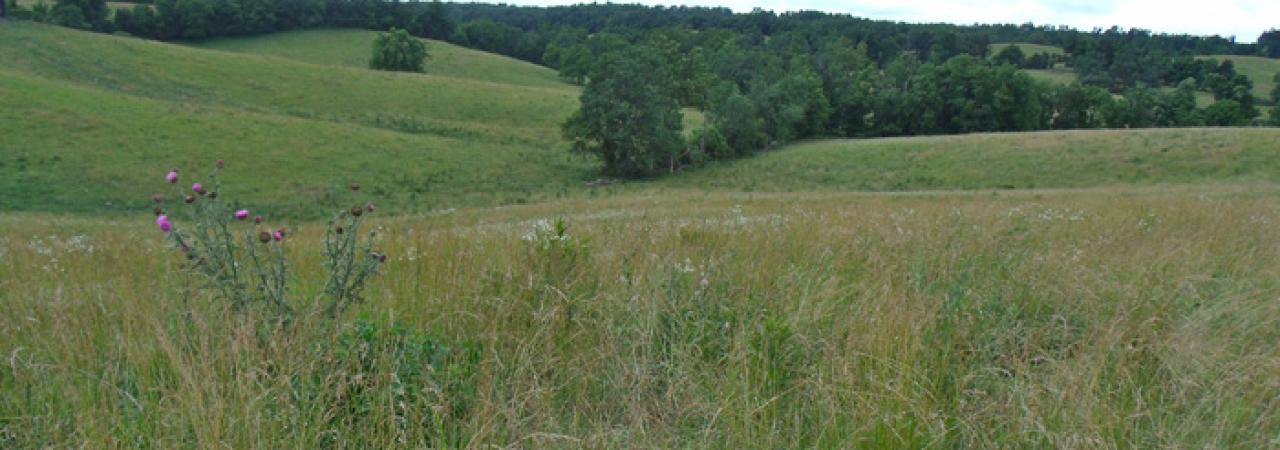
By Stuart W. Sanders
When Kentucky's largest Civil War battle raged a few miles north of Perryville in 1862, Confederate General Braxton Bragg's 18,000 Confederates attacked 20,000 Union troops led by Major General Alexander McCook. After several hours of intense fighting, the Southerners pushed McCook's First Corps back toward the intersection of the Benton and Mackville roads. It was here that a fortuitous reconnaissance led by a Confederate general ended the Battle of Perryville.
As McCook's flanks collapsed, Union Colonel Michael Gooding's brigade was ordered to support the struggling force. Gooding had spent the day west of Perryville with Major General Charles Gilbert's Third Corps. At Perryville, two Union corps (approximately 36,000 men) remained virtually unengaged while McCook's soldiers received the brunt of the Southern attack.
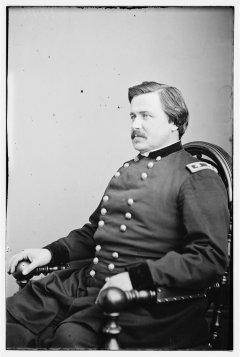
At 3:30 p.m., Gooding's brigade, consisting of 1,400 men of the 22nd Indiana Infantry, the 59th and 75th Illinois Infantry, and the 5th Battery, Wisconsin Light Artillery, marched toward the sound of the fighting. Moving down the Benton Road, Gooding reached the remnants of McCook's corps near the intersection. Gooding reported, "I found the forces badly cut up and retreating (they then having fallen back nearly 1 mile) and were being hotly pressed by the enemy."
Gooding formed his brigade south of the Benton Road, with the 59th Illinois on the left, the 75th Illinois in the center, and the 22nd Indiana on the right. His extreme left rested against the road. As the shattered Union regiments moved to the rear, Gooding's troops saw Brigadier General S.A.M. Wood's Confederate brigade move past the Russell House (a Union headquarters building) and engage their line.
As the troops traded volleys, Union artillery dropped shells into the Confederate ranks, while Rebel cannon blasted the Federal line. The 22nd Indiana charged the Confederates with fixed bayonets, pushing the Southerners past the Russell House and to the Mackville Road. When it appeared that Wood's men would be defeated, a Rebel reserve force bolstered their line. The battle continued, the Union troops fighting on one side of the road, and the Confederates firing from the other.
William Cunningham of the 59th Illinois described the combat to his wife. He wrote, "hundreds of balls came so close to my head & face that I could feel the wind of them . . . Add to the musketry the whirring of solid shot, the screaming & bursting of shell . . . [it was] as near pandemonium as I care to get." Another soldier noted that "Many of the boys received shots through their clothing, some: many as three or four shots." Others were not so lucky. Hundreds were killed and wounded around the Russell House and the intersection of the roads. When the 59th Illinois was pressed by Confederate reserves, Gooding moved the 22nd Indiana to the intersection for support.
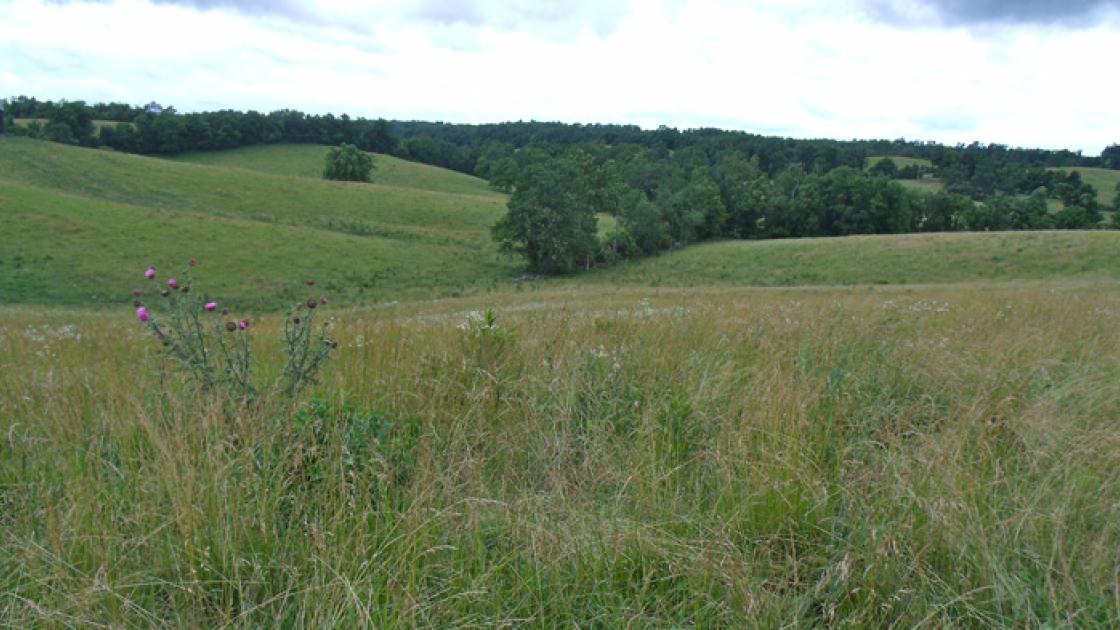
As the sun dropped behind the hills, Confederate Brigadier General St. John R. Liddell and his Arkansas troops advanced to the intersection to support Wood's force. Forming next to the Mackville Road, Liddell wrote, "We confronted a dark line hardly more than twenty-five paces off." Immediately, his men fired, and sporadic shots echoed back from across the road. Cries of "You are firing upon friends; for God's sake stop!" caused both lines to cease fire. John Berry of the 8th Arkansas noted that "the smoke of the battle and the approach of night made it difficult to tell foe from friend. We were soon ordered to cease firing, as it was feared our own men were in our front."
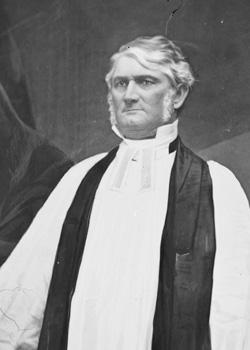
Confederate General Leonidas Polk, former Episcopal Bishop of Louisiana and second-in-command at Perryville, rode up to Liddell when the firing stopped. When Liddell informed Polk that his men had fired on friendly troops, Polk responded, "What a pity. I hope not . . .Let me go and see. Open your ranks." Polk, who could not find a staff member to undertake the reconnaissance, decided to personally scout the "dark line."
Polk rode across the intersection and found the colonel of the mysterious regiment. Polk, "in angry tones," asked the colonel why he was firing upon "his friends." The colonel replied, "I don't think there can be any mistake about it. I am sure they are the enemy." "Enemy?" Polk huffed. "Why I have only just left them myself – cease firing, sir; what is your name, sir?" "My name is Colonel [Keith], of the [22nd Indiana], and pray sir, who are you?" Polk now realized the startling fact that he was in the rear of the Federal line.
Polk decided that "there was no hope but to brazen it out," with his "dark blouse" and the darkening night concealing his true identity. Polk rode up to Keith, shook his fist in the colonel's face and said, "I'll soon show you who I am. Cease firing at once." Polk then rode down the Union line, shouting for the men to cease fire. As he trotted through the enemy regiment, he wrote, he "experienced a disagreeable sensation . . .calculating how many bullets would lie between my shoulders every moment." When Polk reached a grove of trees he spurred his horse back to Liddell's line.
When Polk found Liddell he cried, "General, every mother's son of them are Yankees." Soon the cry of "They are enemies; fire upon them," echoed throughout the Confederate ranks. The Rebel troops blasted the unsuspecting Indiana regiment. Polk later told an acquaintance that the hundreds of muskets "blazed as one gun . . .the slaughter of that Indiana regiment was the greatest I had ever seen in the war." Berry of the 8th Arkansas recalled that "such a roar of musketry was seldom ever heard." Liddell remarked, "A tremendous flash of musketry for the whole extent of the line for nearly one quarter of a mile in length followed. It continued for some fifteen minutes."
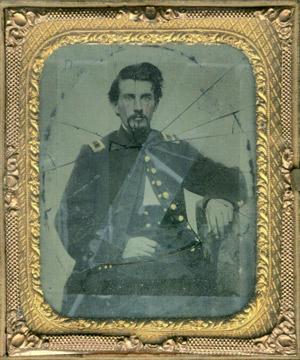
The volley decimated the ranks of the 22nd Indiana. Colonel Keith was shot in the chest and killed. Gooding's horse was struck, and this officer was captured. Polk noted that the fierce volley "closed the operations of the day in that part of the field." The musketry of Liddell's troops forced Gooding's brigade to retreat to the northwest. The Battle of Perryville was over.
When the enemy line grew silent, Liddell ordered his men to cease fire. Then Polk and Liddell rode forward to investigate. Liddell found that "The Federal force had disappeared everywhere. The ground before my line was literally covered with the dead and dying."
The 22nd Indiana lost 59 killed, 119 wounded and 17 men missing. When the troops marched into battle they had a force of 300 men. When the smoke cleared, 195 were casualties. They had lost a staggering 65.3 percent of their force. This regiment lost the largest percentage of troops killed and wounded at Perryville. The rest of Gooding's brigade, the 59th and 75th Illinois, lost 71 men killed, 226 wounded, and 41 captured. The regimental history of the 59th Illinois referred to the action around the intersection as "the trap." Thanks to Polk's reconnaissance, the name was fitting.
Although Liddell wanted to chase the broken Federals, Polk halted his troops near the intersection. The Arkansas regiment captured several Union battle flags, hundreds of discarded firearms, and General McCook's personal baggage. Liddell held the intersection until midnight, when he was ordered to withdraw. "This was done in silence," Liddell wrote, "with manifest surprise and regret by the whole command." As the Confederate army was outnumbered, General Braxton Bragg decided to leave Perryville. Eventually, he was driven from Kentucky. His invasion of the Commonwealth was over.
The battered Union regiments searched for their wounded the next day. When a lieutenant of the 59th Illinois reached the intersection he found that "It seems as though there were not ten square feet of ground on which there were not one and sometimes two or three dead men lying." Here he found a comrade who had been shot in the hip. The lieutenant gave the thirsty man some water, but he soon died.
The horrors of Perryville were most severely felt by the 22nd Indiana Infantry. A former member of the regiment noted that "On calling the roll at 8 o'clock that night, to nearly every other name in the regiment there was no answer." They had Leonidas Polk to thank for the silence.
Stuart W. Sanders is the author of Perryville Under Fire: The Aftermath of Kentucky's Largest Civil War Battle, which was published by The History Press in 2012.
Related Battles
4,211
3,401
